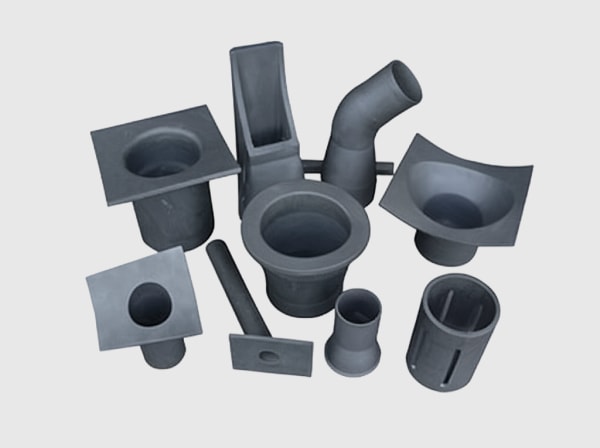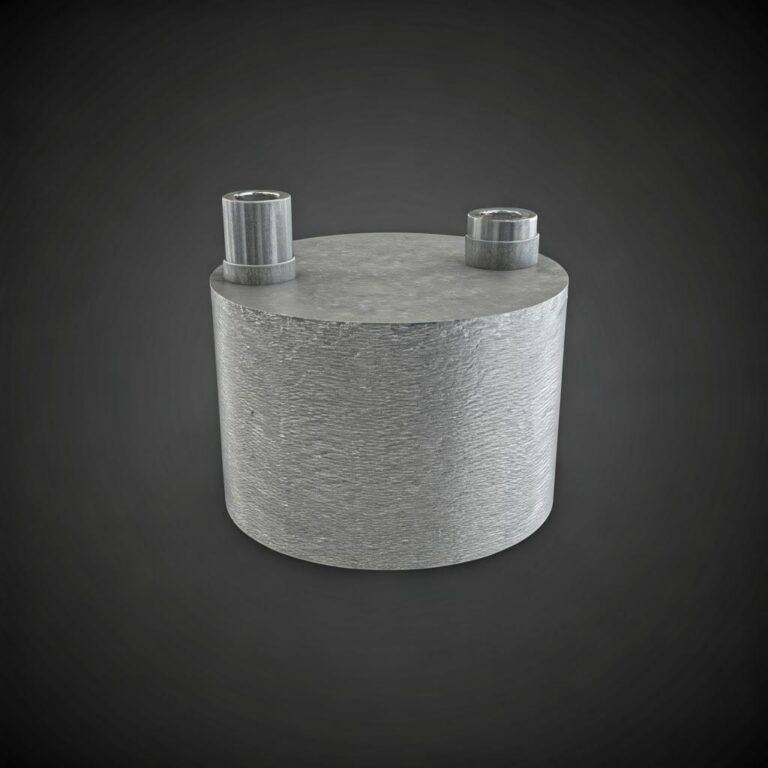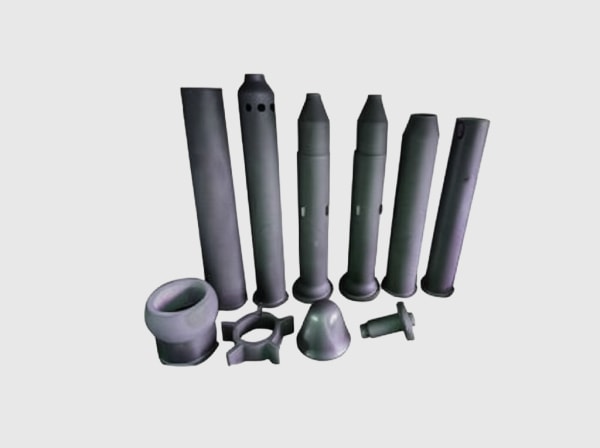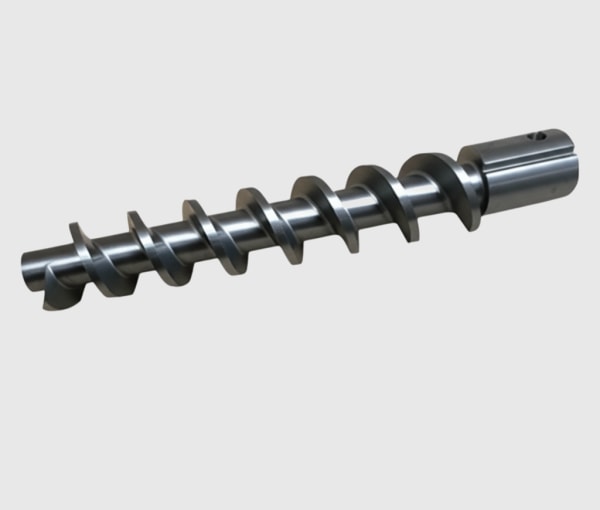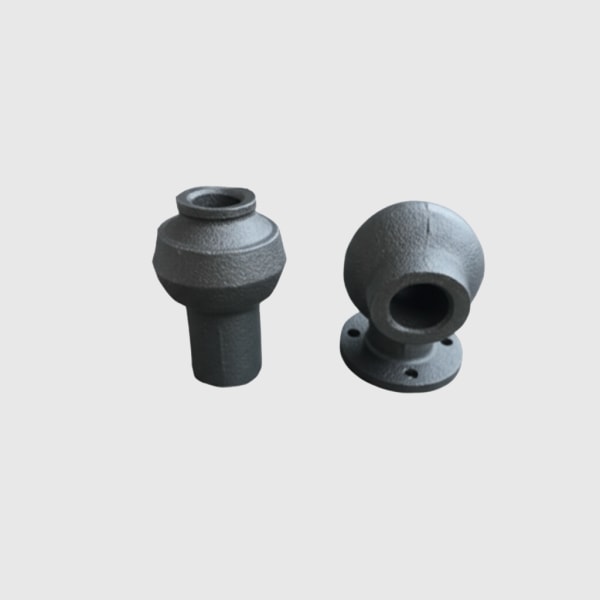Sicarbtech — Silicon Carbide Solutions Expert. Based in Weifang City, China’s silicon carbide manufacturing hub and a member of the Chinese Academy of Sciences (Weifang) Innovation Park, we help Pakistan’s industrial plants specify, engineer, and deploy silicon carbide heat exchangers, thermal components, and electrical insulators that perform reliably in harsh service. With more than 10 years of customization experience and proven results across 19+ enterprises, Sicarbtech delivers end‑to‑end solutions—from powder engineering to finished parts—plus turnkey factory establishment and technology transfer for localized capability.
Executive Summary: 2025 Outlook for Silicon Carbide Heat Management in Pakistan
Pakistan’s industrial economy is reframing heat management as a strategic lever rather than a maintenance line item. Energy volatility and PKR fluctuations make every percentage point of heat recovery count, while provincial environmental enforcement is tightening expectations around fuel efficiency and emissions. In this climate, silicon carbide (SiC) heat exchangers, radiant elements, recuperators, and electrical insulators are moving into mainstream specifications across cement, steel, textile cogeneration, chemicals, and power. Their combination of high thermal conductivity, oxidation resistance, creep strength, and corrosion tolerance translates directly into lower fuel consumption, steadier temperature profiles, and fewer unplanned interventions.
Furthermore, the procurement landscape is maturing. ISO 9001/14001/45001 adoption is broadening; PSQCA‑referenced conformity appears more often in tenders; and insurers ask for evidence of reliability engineering and preventive maintenance. Export‑linked plants need documentation that stands up to buyer audits. Building on this shift, Sicarbtech aligns R‑SiC, SSiC, RBSiC, and SiSiC component engineering with FEA/CFD validation, installation SOPs, and PKR‑based ROI models—so teams can defend investment cases and synchronize deliveries with planned outages. The 2025 outlook favors integrated solutions that blend material performance with strong documentation and field support.
Industry Challenges and Pain Points in Pakistan’s Thermal Systems
Across Punjab, Sindh, and Khyber Pakhtunkhwa, heat‑transfer equipment is punished by a cocktail of conditions: variable fuels, erosive dust, corrosive off‑gases, and start‑stop duty cycles. In cement, air preheater inlets and kiln exhaust lines erode and foul, raising pressure drop and destabilizing heat recovery. Burner tiles and flame tubes crack under thermal shock, distorting flame shape and inflating specific fuel consumption. Stal reheating and process furnaces struggle with oxidation and creep in alloy radiant tubes, widening temperature bands and pushing scrap rates up during peak production. Textile dyeing cogeneration and dryers face particulate‑laden flows and cyclic temperatures that wear ducts and heat‑recovery cores, nudging energy baselines upward.
These technical issues are expensive in practice. A Friday‑night failure triggers overtime labor, emergency freight, and line restarts that can produce off‑spec product. Distributors must either carry heavy spare inventories—tying up working capital—or accept stockout risk given import lead times. Currency volatility then magnifies landed‑cost swings. “Every unplanned hour erodes future capacity and trust in the supply chain,” notes Engr. Faraz Khan, a reliability auditor working across Punjab’s industrial belt (South Asia Reliability Insights, 2024). He emphasizes that mean time between failures has to be engineered to match planned shutdowns; otherwise, indirect costs overwhelm any savings on initial part price.
Compliance adds urgency. Provincial Environmental Protection Agencies are pushing particulate reduction and fuel‑efficiency baselines, and PSQCA‑referenced conformity is increasingly requested in tenders. Insurers and export buyers seek evidence of reliability engineering and maintenance discipline. “Materials that stabilize heat flow, resist oxidation and corrosion, and extend service intervals deliver a compliance dividend,” says Dr. Nadia Rahman, EHS advisor to multiple estates (EHS & Industry Review, 2024). In contrast, conventional heat‑resistant steels and high‑alumina refractories often soften, oxidize, or spall under Pakistan’s abrasive, humid, mixed‑fuel reality. Piecemeal swaps that ignore heat flux distribution, flow trajectories, and support geometry yield parts that fit dimensions but miss the duty, setting the stage for new failure modes. “Reliability is engineered, not purchased off a catalog,” adds Prof. Liu, a ceramics specialist associated with the Chinese Academy of Sciences (Materials Engineering Commentaries, 2024). For 2025, the winning approach pairs the right SiC grade and geometry with verified microstructures, disciplined installation, and traceable documentation.
Advanced Silicon Carbide Solutions Portfolio for Heat Exchangers and Insulators
Sicarbtech develops SiC thermal components to match the realities of Pakistani plants. For recuperators and compact heat exchangers handling dusty, corrosive streams, we specify SiSiC or SSiC cores with optimized fin or channel geometries that maintain heat transfer coefficients while resisting fouling. Radiant tubes and elements for process and reheat furnaces benefit from SiSiC’s oxidation resistance and geometry stability, tightening temperature bands and accelerating heat‑up. Burner tiles and flame tubes in boilers and kilns are engineered in R‑SiC with ribbed structures and tuned wall thickness to absorb thermal gradients during frequent starts.
In chemical and textile cogeneration service, where condensate and corrosive traces compromise metals, SSiC bushings, sleeves, and insulating components preserve clearances and dielectric performance at temperature. For electrical insulation and hot‑zone supports, R‑SiC ensures dimensional stability with low thermal expansion, while SSiC insulators offer superior dielectric strength. Each project begins with FEA and, where relevant, CFD to model stress, temperature fields, and flow behavior. We lock microstructure through proprietary firing or infiltration profiles and controlled powder distributions, then provide installation SOPs detailing surface prep, compatible mortars or gaskets, fastening or bonding methods, torque sequences, and ramp‑up protocols. Documentation aligns with ISO 9001/14001/45001 and PSQCA‑referenced conformity; OEM programs receive IATF 16949‑aligned control plans and PPAP packages.
Technical Performance Comparison for Thermal Service in Pakistan
Thermo‑mechanical properties critical to heat exchangers, radiant elements, and insulators
| Property and operating relevance | R‑SiC (Recrystallized) | SSiC (Sintered) | RBSiC / SiSiC (Reaction‑bonded) | High‑alumina refractory | Heat‑resistant alloy steel |
|---|---|---|---|---|---|
| Maximum service temperature in air (°C) | 1,650–1,700 | 1,600–1,700 | 1,380–1,480 | 1,400–1,600 | 900–1,100 |
| Thermal conductivity at 25°C (W/m·K) | 20–35 | 90–120 | 60–80 | 2–6 | 16–25 |
| Coefficient of thermal expansion (×10⁻⁶/K) | ~4.0–4.5 | ~4.0–4.2 | ~4.2–4.8 | 6–8 | 14–17 |
| Oxidation resistance at 1,200°C | Doskonały | Doskonały | Bardzo dobry | Dobry | Uczciwy |
| Creep resistance at high T | Wysoki | Wysoki | Umiarkowany-wysoki | Umiarkowany | Umiarkowany |
| Electrical resistivity (Ω·cm, RT) | High (insulating) | High (insulating) | High (insulating) | Umiarkowany | Low (conductive) |
SiC’s combination of high conductivity and low expansion stabilizes temperature fields and geometry under rapid cycling—essential for Pakistani plants with start‑stop profiles and mixed fuels.
Lifecycle economics and reliability outcomes in local duty cycles
| Application in Pakistan | Conventional baseline | Sicarbtech SiC solution | Energy impact | Maintenance impact | Indicative payback (months) |
|---|---|---|---|---|---|
| Air/gas‑to‑gas recuperator cores | Alloy/ceramic hybrids | SiSiC compact core | 1–3% fuel saving via stable heat recovery | 2–3× core life; less fouling | 8–14 |
| Radiant tubes/elements (reheat/process) | Heat‑resistant alloys | SiSiC radiant elements | Faster heat‑up; tighter uniformity | 2× interval between interventions | 10–16 |
| Burner tiles/flame tubes | Castable/steel | R‑SiC tiles and flame tubes | Stabilized flame, reduced SFC | 2–3× service life | 8–12 |
| High‑temp insulators/supports | Alumina/steatite | SSiC or R‑SiC insulators | Improved dielectric and stability | Fewer hot‑spot failures | 6–10 |
While exact results depend on fuel mix, dust loading, and maintenance discipline, deployments across Punjab and Sindh show consistent gains: lower fuel, fewer outages, and easier audits.
RBSiC vs SSiC in heat exchanger design and hot‑zone duty
| Consideration | RBSiC / SiSiC | SSiC |
|---|---|---|
| Forming complexity and size | Excellent for complex, larger shapes; cost‑effective infiltration routes | More demanding for large monoliths; excels in precision parts |
| Przewodność cieplna | 60–80 W/m·K; strong for heat exchanger channels and fins | 90–120 W/m·K; best‑in‑class conductivity for compact cores |
| Oxidation/corrosion resistance | Very good; residual Si can aid wetting control | Excellent; near‑theoretical density, no free Si |
| Mechanical strength and hardness | High; suitable for structural panels and tubes | Very high; best for seals, insulators, precision cores |
| Cost and lead time | Generally lower for large, complex geometries | Higher for large pieces; ideal for critical precision components |
For Pakistani heat recovery and hot‑zone structures, SiSiC offers premium conductivity and density when the duty justifies it, while RBSiC balances cost and manufacturability for larger, complex modules.
Real‑World Applications and Success Stories in Pakistan
At a cogeneration unit supporting a textile cluster in Sindh, alloy‑based recuperator elements suffered oxidation and fouling, causing pressure drop spikes and erratic heat recovery. Sicarbtech engineered a SiSiC compact core with channel geometry tuned via CFD to minimize dust deposition. Over the next 12 months, the plant reported approximately 1.5% fuel savings, flatter stack temperatures, and a shift from emergency cleanouts to scheduled inspections. The payback landed inside a year once downtime reductions were counted.
In a North Punjab reheat furnace, alloy radiant tubes crept and oxidized, widening soak temperature bands and prompting mid‑campaign tube swaps. We replaced them with SiSiC radiant elements designed to the furnace atmosphere and load profile. Temperature uniformity tightened, heat‑up times shortened, and tube‑related downtime fell to near zero in the first year. “Quality follows stability,” remarks Engr. S. Aftab, a reliability consultant to multiple OEMs and mills (Pakistan Maintenance & Reliability Exchange, 2024). “When geometry stays true at temperature, OEE rises and scrap falls.”
A cement line’s preheater inlet elbows experienced accelerated wear and fouling during monsoon season. Sicarbtech supplied RBSiC segmental liners with a surface finish that discouraged fine dust adhesion, coupled with a mounting scheme allowing quick segment swaps. Pressure drop stabilized, fouling intervals extended, and maintenance aligned with planned shutdowns—an outcome the plant’s engineering manager linked to lower energy intensity and smoother emissions performance.



Technical Advantages and Implementation Benefits with Local Regulatory Compliance
The physics behind SiC directly supports Pakistan’s performance and compliance goals. High thermal conductivity and low expansion reduce hot spots and thermal gradients, while oxidation and corrosion resistance preserve surfaces in oxygen‑rich, chemically active flows. In practical terms, recuperators retain heat‑transfer coefficients longer; radiant elements keep uniform emissivity; burner assemblies resist thermal shock; and insulators maintain dielectric integrity at temperature. The result is lower specific fuel consumption, steadier temperature bands, and reduced particulate generation—benefits that show up in energy ledgers and audit rooms.
Implementation discipline is essential. Sicarbtech validates designs with FEA and, where necessary, CFD; defines tolerances and finishes compatible with Pakistani OEM interfaces; and issues installation SOPs covering substrate preparation, bonding or mechanical fixation, expansion allowances, torque sequences, and start‑up ramp rates. For electrical and thermal insulators, we specify creepage distances, dielectric test criteria, and inspection intervals. Documentation supports ISO 9001 and 14001; EHS procedures align with ISO 45001; and PSQCA‑referenced conformity packs ease local tendering. For OEM/EPC programs, we prepare IATF 16949‑aligned control plans and PPAP documentation. “Compliance is a design constraint, not an afterthought,” emphasizes Dr. Li, CAS‑affiliated materials scientist (CAS Industry Notes, 2024). Designing for documentation shortens acceptance cycles and reduces project risk.
Custom Manufacturing and Technology Transfer Services by Sicarbtech
Sicarbtech’s differentiator for Pakistani buyers is a turnkey capability that fuses advanced R&D, disciplined manufacturing, and knowledge transfer.
Our R&D, strengthened by the Chinese Academy of Sciences (Weifang) Innovation Park, underpins proprietary processes across R‑SiC, SSiC, RBSiC, and SiSiC. We engineer powder size distributions and chemistry, employ isostatic pressing, slip casting, and extrusion for complex or large shapes, and run carefully profiled firing or infiltration cycles to achieve repeatable microstructures. That repeatability—tight porosity and strength distributions—maps directly to stable heat‑transfer coefficients, oxidation resistance, and mechanical integrity at temperature.
We deliver complete technology transfer packages for localization. These include process know‑how from green body through debinding, sintering/infiltration, machining, and lapping; detailed equipment specifications for kilns, furnaces, presses, mixers, and finishing cells; and training programs for operators, QC analysts, and maintenance teams. Our factory establishment services span feasibility studies, utilities and HVAC design, plant layout, EHS alignment with Pakistani regulations, and line commissioning. Hybrid models keep critical high‑temperature steps in Weifang while machining, assembly, and inspection occur in Pakistan, cutting lead times and FX exposure and building domestic capability.
Quality systems are embedded. Statistical process control tracks density, porosity, and critical dimensions; mechanical testing verifies flexural strength and hardness; and pressure/leak testing qualifies heat‑exchange and sealed components. For OEM/EPC programs, we align with IATF 16949, developing control plans, capability studies, and PPAP documentation to streamline onboarding. Post‑launch, our engineers continue to optimize firing curves, tooling, and yields, while field data informs design refreshes. Over 10+ years and 19+ enterprise collaborations, this comprehensive, transferable approach has produced faster qualification, fewer first‑run issues, and clear PKR‑based ROI.
Future Market Opportunities and 2025+ Trends in SiC Heat Management
Several vectors will expand SiC adoption beyond 2025. Energy economics and ESG reporting will keep rewarding components that stabilize heat transfer and extend service intervals, especially in mixed‑fuel cement lines, reheat furnaces, and textile cogeneration. Process intensification in chemicals and power will raise operating temperatures and chemistries, where SiC’s oxidation and corrosion resistance become structural advantages. Export‑oriented plants will tighten certification expectations; engineered SiC with robust traceability will be a pragmatic route to satisfying buyer and insurer audits.
Supply chains will mature as well. Engineering‑led distributors will differentiate by stocking critical SiC spares, supervising first‑fits, and partnering on FEA/CFD‑guided design updates. Localization via technology transfer will shorten response times and mitigate currency risk. As tenders emphasize total cost of ownership and OEE, SiC heat‑management components will shift from tactical substitutions to strategic reliability infrastructure, improving competitiveness at home and abroad.
Często zadawane pytania
Which SiC grade should I choose for heat exchangers and radiant elements in Pakistan?
SiSiC is often preferred for compact recuperator cores and radiant elements thanks to its high thermal conductivity and density. RBSiC/SiSiC is excellent for larger, complex modules where manufacturability and cost balance matter. R‑SiC suits burner tiles and flame tubes needing thermal‑shock resilience, while SSiC is ideal for precision insulators and bushings exposed to corrosive media.
Can Sicarbtech provide PSQCA and ISO documentation for tenders?
Yes. We supply PSQCA‑referenced conformity packs, ISO 9001/14001/45001 documentation, and structured third‑party test reports where required. For OEM/EPC programs, we prepare IATF 16949‑aligned control plans and PPAP submissions.
What payback can Pakistani plants expect when switching to SiC heat‑management components?
Typical payback ranges from 8 to 16 months for recuperators and radiant elements, and 6 to 12 months for burner assemblies and liners, depending on fuel prices, dust loading, duty cycle, and baseline failures. We model ROI in PKR, including duties, installation, and downtime reductions.
How does SiC improve efficiency versus heat‑resistant alloys?
Higher thermal conductivity and oxidation resistance reduce hot spots and preserve emissivity and geometry. In practice, plants see faster heat‑up, tighter temperature uniformity, and 1–3% fuel savings in heat‑recovery applications.
Can Sicarbtech localize manufacturing or finishing in Pakistan?
Absolutely. Through technology transfer, we provide process know‑how, equipment specifications, SOPs, QC protocols, and training. Hybrid models—critical firing in Weifang with local machining and assembly—shorten lead times and reduce FX exposure.
What information do you need to engineer a custom SiC heat exchanger or radiant element?
We generally request gas composition, temperature and pressure profiles, dust loading and particle size, flow rates and Reynolds regime, geometry constraints, failure history, target MTBF, and interface drawings with tolerances. These inputs drive FEA/CFD, grade selection, and manufacturability.
How are SiC components installed to ensure full service life?
We supply installation SOPs covering substrate/fixture preparation, bonding or mechanical fixation, expansion joints, torque sequences, and controlled start‑up ramps. For insulators, we specify creepage and clearance distances and dielectric tests. First‑fit supervision is available.
What lead times and logistics options are available for Pakistani buyers?
Custom lead times typically run 4–10 weeks depending on complexity. We align shipments with outage calendars and can phase deliveries. Under technology transfer or local finishing, we can position safety stock locally for critical spares.
Do you provide after‑sales engineering support and failure analysis?
Yes. We offer remote diagnostics, on‑site commissioning, performance and wear audits, and root‑cause analysis. We co‑develop inspection schedules and spares strategies aligned with planned shutdowns.
How does Sicarbtech ensure batch‑to‑batch consistency for critical thermal components?
Controlled powder distributions, proprietary firing/infiltration profiles, SPC on density/porosity/dimensions, and mechanical plus leak/pressure testing underpin consistency. For OEM programs, we align control plans with IATF 16949 and provide PPAP documentation.
Dokonywanie właściwego wyboru dla swoich operacji
Adopting silicon carbide heat exchangers, radiant elements, and insulators is not merely a materials decision; it is a strategic commitment to predictable thermal performance, lower fuel intensity, and audit‑ready reliability. Sicarbtech’s integrated approach—R‑SiC, SSiC, RBSiC, and SiSiC materials; application‑driven engineering with FEA/CFD; robust documentation; and transferable manufacturing know‑how—gives Pakistani plants a de‑risked path from specification to measurable ROI. Whether your constraint is a fouling recuperator, a creeping radiant tube, or an insulator failing at temperature, the right SiC solution will stabilize your process and flatten your cost curve.
Konsultacje ekspertów i niestandardowe rozwiązania
Share your gas chemistry, temperature envelope, flow data, and pain points with Sicarbtech’s engineering team. We will propose the optimal SiC grade and geometry, simulate performance against your duty cycle, and build an implementation plan synchronized with planned outages—complete with a PKR‑based ROI model. Contact: [email protected] or +86 133 6536 0038.
Explore Related Cluster Resources
- Benefits of Silicon Carbide for Industrial Heat Management
- Applications of SiC in High-Temperature Heat Transfer Systems
- Customized Silicon Carbide Heat Exchangers for Pakistani Industry
- SiC Grades and Thermal Performance for Industrial Engineers
- Material Comparison: RBSiC vs SSiC in Heat Exchanger Design
- Customization Options for Silicon Carbide Thermal Components
- SiC Solutions for Chemical, Power and Metallurgy Plants in Pakistan
- Industry Use Cases: SiC Heat Exchangers in Harsh Environments
- Procurement and Delivery of SiC Parts for Pakistani Buyers
- Download Our SiC Engineering Catalog for Industrial Use
Metadane artykułu
Last updated: 2025-09-23
Następny planowany przegląd: 2026-01-15
Content freshness indicators: 2025 Pakistan heat‑management outlook integrated; PSQCA and ISO 9001/14001/45001 considerations reflected; IATF 16949 support for OEM programs; ROI modeled in PKR; case insights from 2023–2025 Sicarbtech deployments with 19+ enterprises; trends calibrated to energy volatility, ESG pressures, mixed‑fuel usage, and localization initiatives.

